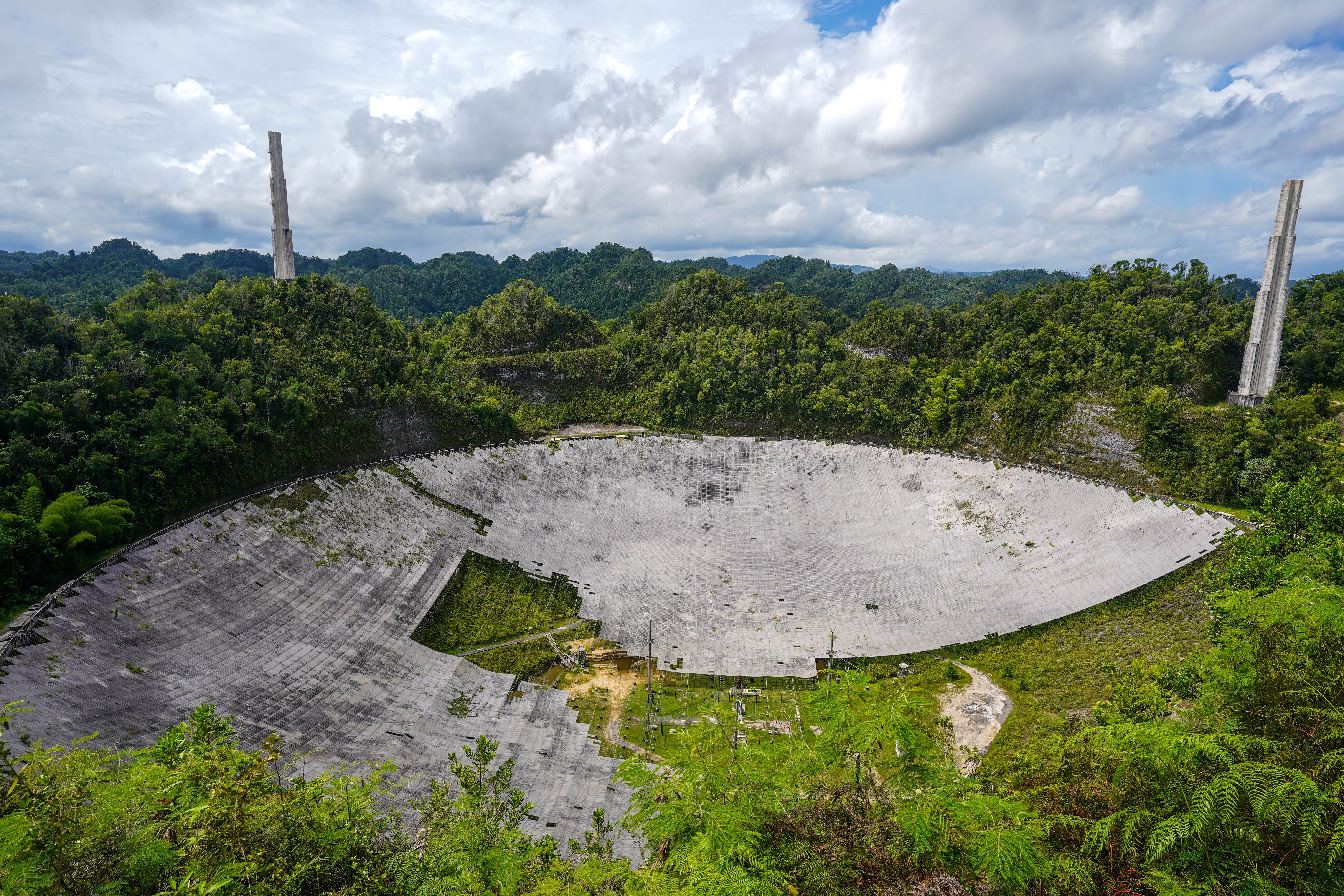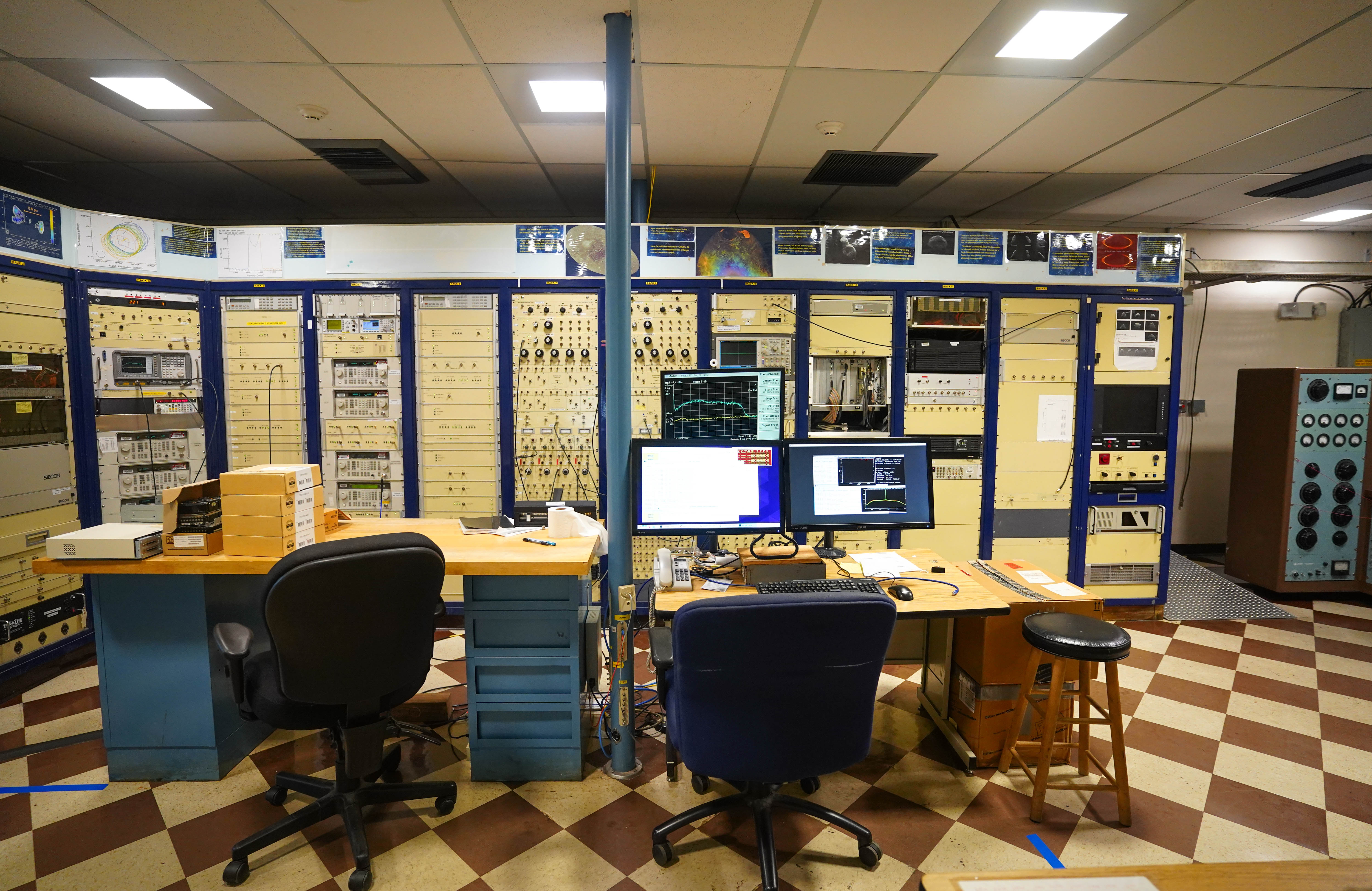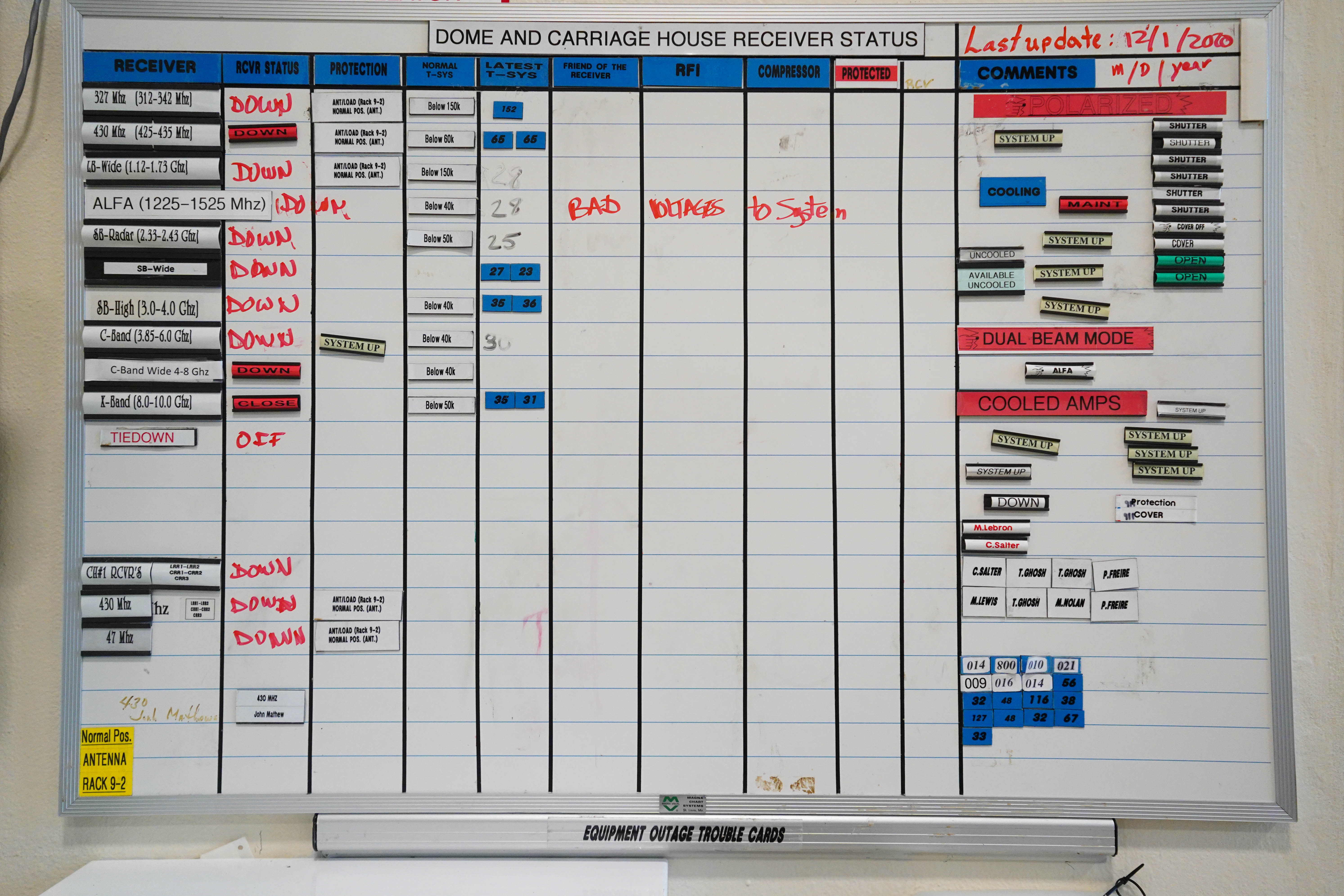After weathering hurricanes, earthquakes, budget cuts and a pandemic-induced shutdown, the iconic Arecibo Observatory in Puerto Rico closed its doors on 14 August. After its main instrument collapsed two years ago, the site was supposed to shift from carrying out astronomy and other research to being a science education centre. But concrete plans for that have yet to materialize — and funding for current operations has run out.
Scientists were disappointed that research would formally halt at the site, but they had hoped to keep some instruments running, both for the students who might use the educational centre and to continue the site’s astronomy legacy. Doubts now swirl, as equipment is taken offline and dismantled, that Arecibo will ever again study the sky.
“Sometimes I’m in disbelief that this ever happened,” says Abel Méndez, an astrobiologist at the University of Puerto Rico at Arecibo. “What scares me is it not coming back.”
The observatory’s main attraction — a 305-meter-wide dish that was responsible for, among other things, studying near-Earth asteroids, discovering exoplanets and observing gravitational waves — was destroyed in 2020 when some support cables snapped following years of delayed maintenance. In 2022, the US National Science Foundation (NSF), which runs the facility, announced it would not rebuild the dish, citing community recommendations to put the agency’s limited budget into other, newer astronomical facilities. Instead, the NSF said it would convert the observatory into the Arecibo Center for STEM Education and Research (ACSER).
Under this plan, the agency would award between US$1 million and $3 million per year to an institution to manage the centre on a day-to-day basis. Before the telescope’s collapse, the NSF was contributing $7.5 million annually to Arecibo, and management of the site was led by the University of Central Florida in Orlando.
When calling for proposals to manage ACSER, the NSF projected that the centre might open this year. But Monya Ruffin, deputy director of the NSF’s Research on Learning in Formal and Informal Settings Division, now says that the agency hopes to “make an award in 2023.”
A series of losses
The Arecibo Observatory not only served the scientific communities that used it — planetary scientists, radio astronomers and atmospheric researchers — but was also a source of inspiration and pride for Puerto Rico. For years, schoolchildren from across the island would go to Arecibo on field trips to learn about the site and about astronomy. A number of these students would eventually work there as astronomers.
“The Arecibo Observatory was a great research site, but it also had many educational programs already, without being called a centre for education and research,” says Héctor Arce, an astronomer at Yale University in New Haven, Connecticut.

he NSF had been trying to cut back its investment in Arecibo for over a decade, to free up millions of dollars for other projects. With no decisions made yet about ACSER, the observatory’s staff are winding down their research. “It’s devastating, because they don’t want to leave,” says Olga Figueroa Miranda, the observatory’s director. “They want to stay in Puerto Rico … but they are not able to because they need to find a job.” Around 125 people once worked on the site. Roughly 75 were still there in the weeks before the closure, but after 14 August, only 18 staff members will remain to maintain the site until the new management comes in.
One instrument still on site is a 12-meter radio telescope that was upgraded just this year and had been “working 24/7,” Méndez says. Since it was constructed in 2011, it has been used for a range of things, including solar observations.
But without knowing who will manage the site, researchers are shutting down the telescope for now, unsure whether there will be funding for or interest in resuming its operation in future. “I feel like we’ve had a double loss in terms of telescopes. We lost the 305-meter telescope in December 2020, and now in August, we will lose the last radio telescope there,” Méndez adds.
Maintaining a legacy
Although converting Arecibo into an education centre was not researchers’ first choice, many hoped that keeping the site open might one day pave the way for new research instruments — even one that might rival the 305-meter telescope.
One hurdle is Puerto Rico’s lack of a voting member in the US Congress, which would ultimately have to supply funds to the NSF. Resident Commissioner Jenniffer González-Colón, who represents Puerto Rico in Congress but cannot vote on bills, says that she would like the next group tasked with managing Arecibo to set up a solid research program with students, so that she can build support for a larger, more ambitious program in the future. But first, a proposal for managing ACSER must be approved.

“Once we have that, I can push for [research funds] in Congress,” she says.
One proposal for managing ACSER has come from the University of Puerto Rico (UPR), Mayagüez, a campus that has historically worked closely with the facility. The proposal aims to set up the education centre while also continuing astronomy research and developing a program to study the area’s rainforest.
Having a Puerto Rican institution take over the site would not only enable a smooth transition by tapping specialists already knowledgeable about the site — but would also signal how much the research community in Puerto Rico has grown, says Ubaldo Córdova Figueroa, a chemical engineer at UPR Mayagüez who led the drafting of the proposal.
Twenty or 30 years ago, Córdova Figueroa says, “we didn’t have the infrastructure to lead these types of projects”. Over the past few decades, Puerto Rico has established more research institutes, he adds. And since 1997, the percentage of the Puerto Rican workforce with a PhD has increased more than fourfold.
Next-generation plans
One hope for bringing research back to the site is that Arecibo might host some of the dishes that are being planned as part of the Next Generation Very Large Array. This is a network of some 260 dishes recommended by the 2020 US decadal survey of funding priorities in astronomy and astrophysics, and is currently under development at the NSF’s National Radio Astronomy Observatory (NRAO) in Charlottesville, Virginia.
Tony Beasley, the NRAO’s director, says the plan is to place some of the array’s receivers at Arecibo, but it might be three or four years before that happens.

Another, more distant hope is for the Next Generation Arecibo Telescope (NGAT) to be built at the site. After the 305-meter dish collapsed, some researchers who had used the site proposed NGAT, an instrument that would combine a 314-meter-wide platform with a swarm of 9-meter dishes on top of it.
The decision to use Arecibo as an education centre was “discouraging” to those hoping for NGAT, says Anish Roshi, a radio astronomer at the University of Central Florida who led a group that put together a white paper on the instrument’s design.
Although they have not yet calculated how much such an instrument would cost, Roshi and other proponents would like to form a small team to start building and testing some of its components, to validate and streamline their proposal. But they have not received any funding to start this process.
The time and effort would be well worth it, to continue the legacy of astronomy on the island, say several of the scientists Nature talked to. “Part of the process of learning about the Universe is you have to train other people to follow through on your science. If you don’t do that, then you are in a dead end,” Méndez says.
This article is reproduced with permission and was first published on August 11, 2023.


